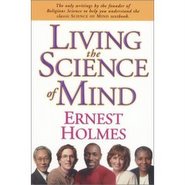Excerpt from Forbidden Faith by Richard Smoley - The Gnostic Legacy
"Who or what, then, is the demiurge (evil demon)? To say it is embedded in our nervous systems, even in our DNA, is to say anything and nothing. And yet we seem haunted by the idea that the fundamental problem with the world lies within us. Otherwise we would not invest so much time and energy in trying to fix ourselves."
"Of recent attempts to address this conundrum, among the most powerful is A Course in Miracles...the Course has been given short shrift by conventional theologians and spiritual leaders. But then the circumstances of its transmission make it unlikely that the Course would be accepted in conventional circles, since the voice that dictated the material...claimed to be that of Jesus Christ correcting two thousand years of misrepresentation of his teaching."
"Even if we grant that transmission of this kind...is possible, there's no way of proving the assertion true or false: to use the language of the philosopher Karl Popper, it is not 'falsifiable." It can't be checked against the conventional or even the apocryphal Gospels, since most modern scholars agree that these contain much material that probably does not go back to Jesus himself. There are no other sources for the life and teachings of Christ that are any more reliable."
"In the end, the Course has to be taken at face value, on the strength of its ideas alone. It restates many themes of the Gnostic legacy. Indeed one of the barriers to its acceptance arise from its echoes of the ancient Gnosis. We see these most clearly in its attitude toward the visible world, which, the Course asserts, is not real and was not created by God. "There is no world! This is the central thought the course attempts to teach."
"According to the Course, the world we see, the physical world of suffering and loss and change, is the result of a primordial separation from God - or rather, a belief that separation from God is possible."
"So far the ideas seem to echo those of classical Gnosticism as well as the great dualist heresy. But the Course takes these premises to a very different conclusion. If God did not create the meaningless world we see, if there is no ultimate reality to the body, then the only appropriate response is to look past these illusions...the Course speaks of laughing at the 'tiny, mad idea' of separation...also teaches that the only sane response to any form of madness in the world is to forgive it."
"A Course in Miracles thus takes one of the central precepts of the Gospels - forgiveness - and elevates it to a status that it does not have and cannot have in mainstream Christianity."
"The Course's approach to the ego (its name for the illusory sense of separated self) also reformulates the Gnostic heritage in a radical way...what the Course calls the ego - is not a god apart from ourselves; it does not exist in some spiritual stratosphere; it is the embodiment of our own desire to exist apart from God."
"This passage echoes a section of the Gnostic Apocryphon of John that describes the demiurge Ialdabaoth: "And he is impious in his madness which is in him. For he said, 'I am God and there is no other God beside me,' for he is ignorant of his strength, the place from which he had come." Possibly the author of Apocryphne has a meaning in mind similar to that in the Course, which, using the language and thought of his time, he expressed in mythic terms. Because the ancient text speaks only symbolically, we will probably never know. In any case, the Course, whether it was written by Jesus Christ, Helen Schucman, or some other being, restates some of the profoundest themes of the Gnostic legacy in a fresh and remarkably self-consistent way. That may be one of the chief sources of its appeal."
Namaste - Ron
Wednesday, June 07, 2006
Subscribe to:
Post Comments (Atom)




No comments:
Post a Comment